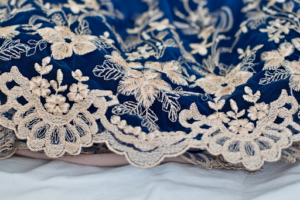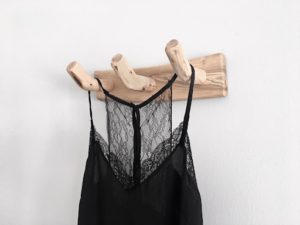
Fabric choices are the unsung heroes of the fashion industry, playing a crucial role in defining the quality and sustainability of garments. Whether you’re a fashion designer, a sustainability advocate, or a clothing brand owner, understanding the impact of fabric choices can elevate your craft and align it with modern ethical standards.
The Influence of Lace Fabric on Garment Aesthetics and Quality
The Timeless Allure of Lace
Lace fabric has been a staple in fashion for centuries, often associated with luxury and elegance. Its intricate patterns and delicate texture make it a favorite for high-end garments. Historically, lace was handcrafted, making it an exclusive material reserved for the elite. Today, machine-made lace makes it accessible to a broader audience without compromising its aesthetic appeal.
Types of Lace and Their Unique Qualities
Not all lace is created equal. There are various types, each with its unique characteristics. Chantilly lace, known for its fine ground and detailed patterns, adds a touch of sophistication to any garment. Guipure lace, on the other hand, is heavier and more durable, making it ideal for structured garments. Understanding these distinctions helps designers choose the right lace to enhance their creations’ aesthetics and durability.
Case Studies in Lace Fabric Usage
Luxury fashion houses like Chanel and Dior have long used lace to elevate their collections. For instance, a lace dress often features intricate patterns that highlight the craftsmanship behind the garment. These examples showcase how lace can be used to create high-quality, aesthetically pleasing garments that stand the test of time.
Fabric Sustainability in the Fashion Industry
The Environmental Impact of Fabric Production
The fashion industry is one of the most polluting industries globally, and fabric production significantly contributes to this problem. Traditional lace production involves extensive use of water, chemicals, and energy, all of which have adverse environmental effects. However, the tide is turning as more brands and designers prioritize sustainability.
Sustainable Fabric Choices
Sustainable fabrics, such as organic cotton, bamboo, and recycled materials, are gaining popularity for their lower environmental impact. These fabrics not only reduce the carbon footprint but also enhance garment quality. For lace specifically, innovations include using biodegradable materials and eco-friendly dyes, making it possible to enjoy this luxurious fabric without harming the planet.
Innovations in Sustainable Lace Production
Several companies are pioneering sustainable lace production methods. For example, some manufacturers use organic cotton threads and natural dyes, significantly reducing environmental harm. These innovations ensure that lace remains a viable option for designers committed to sustainability.
The Role of Lace in Ethical Fashion and Quality Garment Making

Incorporating Lace into Ethical Fashion
Ethical fashion is about more than just sustainable materials; it also involves fair labor practices and responsible sourcing. Lace can be incorporated into ethical fashion by ensuring that the workers who produce it are paid fairly and work in safe conditions. Brands that prioritize ethical practices often find that their garments are of higher quality and more appealing to conscientious consumers.
Fabric Choice and Garment Longevity
The choice of fabric directly impacts the longevity of a garment. High-quality lace, for instance, is less likely to fray and degrade over time. This durability means that garments made with quality lace can be worn for years, reducing the need for frequent replacements and contributing to a more sustainable fashion cycle.
The Ethical Appeal of High-Quality Lace
Brands that use high-quality, ethically produced lace often find that they attract a loyal customer base. Consumers today are more informed and are increasingly choosing brands that align with their values. By incorporating ethically produced lace into their collections, brands can enhance their reputation and ensure long-term success.
Practical Tips for Designers and Brand Owners
Selecting High-Quality Lace
When selecting lace fabric for garment production, it’s essential to consider both aesthetics and durability. Look for lace that has a tight weave and is free from imperfections. Additionally, consider the type of garment you’re creating; lighter lace works well for delicate pieces, while heavier lace is suitable for structured designs.
Integrating Lace into Men’s Fashion
Traditionally seen as a feminine fabric, lace is making its way into men’s fashion, offering a fresh, avant-garde look. Designers are encouraged to experiment with lace in men’s shirts, ties, and even suits. Integrating lace into men’s fashion can broaden its appeal and introduce new design possibilities.
Maximizing the Benefits of Lace
To fully leverage the benefits of lace, it’s crucial to pay attention to details. Ensure that the lace complements the other fabrics used in the garment. Proper care instructions should also be provided to consumers to maintain the fabric’s quality over time.
Conclusion
Fabric choices are pivotal in determining the quality, sustainability, and ethical footprint of garments. Lace fabric, with its rich history and modern innovations, offers numerous possibilities for designers and brand owners. By understanding the nuances of lace and other sustainable fabrics, you can create high-quality, ethical, and sustainable garments that resonate with today’s discerning consumers.
Ready to elevate your designs? Explore our fabric selection and join the movement towards a more sustainable and ethical fashion industry.

